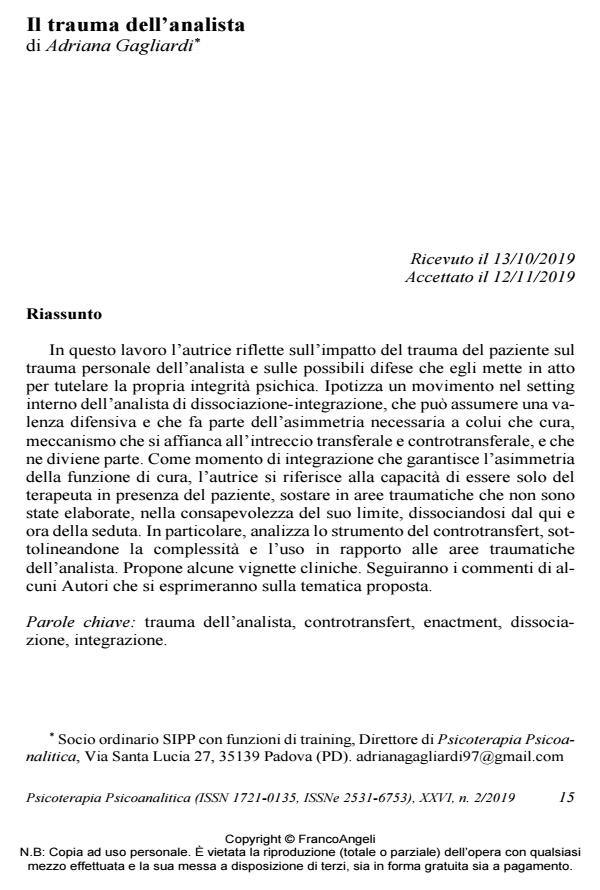The analyst’s trauma
Journal title PSICOTERAPIA PSICOANALITICA
Author/s Adriana Gagliardi
Publishing Year 2020 Issue 2019/2
Language Italian Pages 38 P. 15-52 File size 312 KB
DOI 10.3280/PSP2019-002002
DOI is like a bar code for intellectual property: to have more infomation
click here
Below, you can see the article first page
If you want to buy this article in PDF format, you can do it, following the instructions to buy download credits

FrancoAngeli is member of Publishers International Linking Association, Inc (PILA), a not-for-profit association which run the CrossRef service enabling links to and from online scholarly content.
In this work the author reflects on the impact of the patient’s trauma on the personal trauma of the analyst and on the possible defenses that he uses to protect his psychic integrity. It speculates a movement of dissociation-integration in the internal setting of the analyst, which can take on a defensive value and which is part of the asymmetry neces-sary for the caregiver: a mechanism that joins the transference and countertransference interconnection, and that becomes part of it. As a moment of integration that guarantees the asymmetry of the care func-tion, he refers to the ability to be alone of the therapist in the presence of the patient, to pause in traumatic areas that have not been processed and in the awareness of its limit, dissociating himself from the here and now of the session. In particular, he analyzes the instrument of coun-tertransference, emphasizing its complexity and use in relation to the traumatic areas of the analyst. He offers some clinical vignettes. The comments of some Authors who will express themselves on the pro-posed topic will follow.
Keywords: Analyst’s trauma, countertransference, enacment, dissocia-tion, integration.
Adriana Gagliardi, Il trauma dell’analista in "PSICOTERAPIA PSICOANALITICA" 2/2019, pp 15-52, DOI: 10.3280/PSP2019-002002